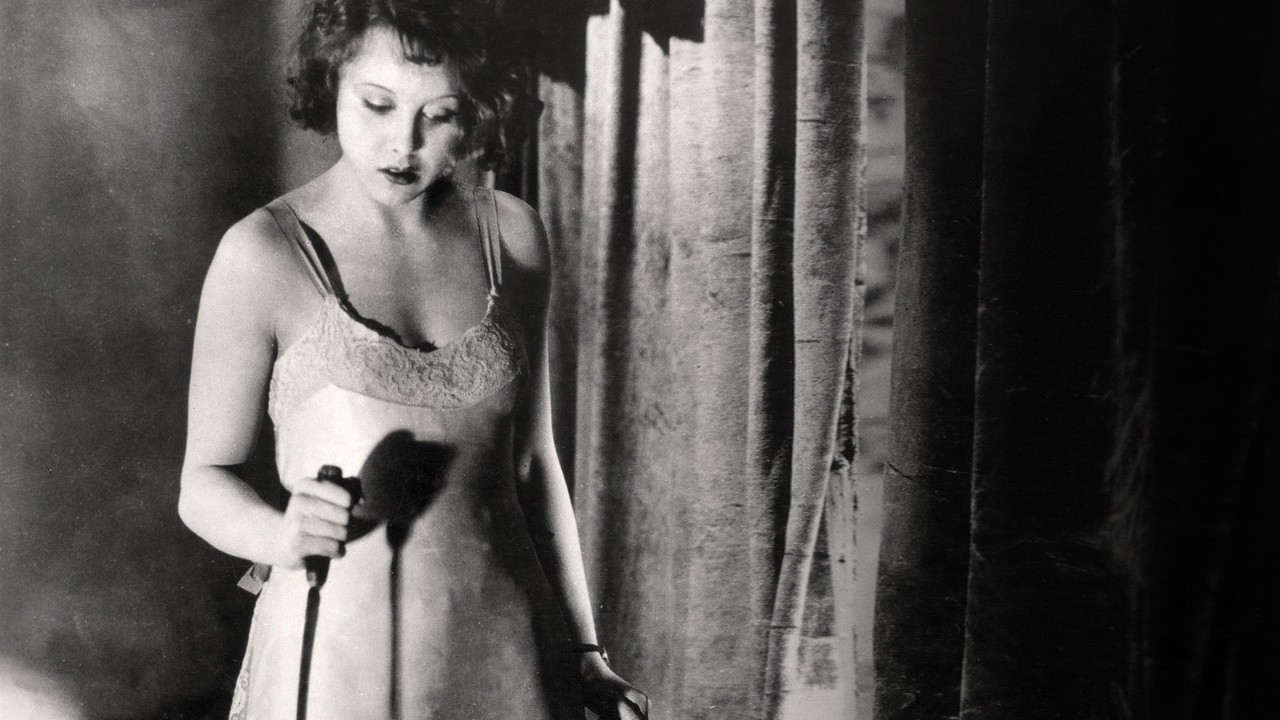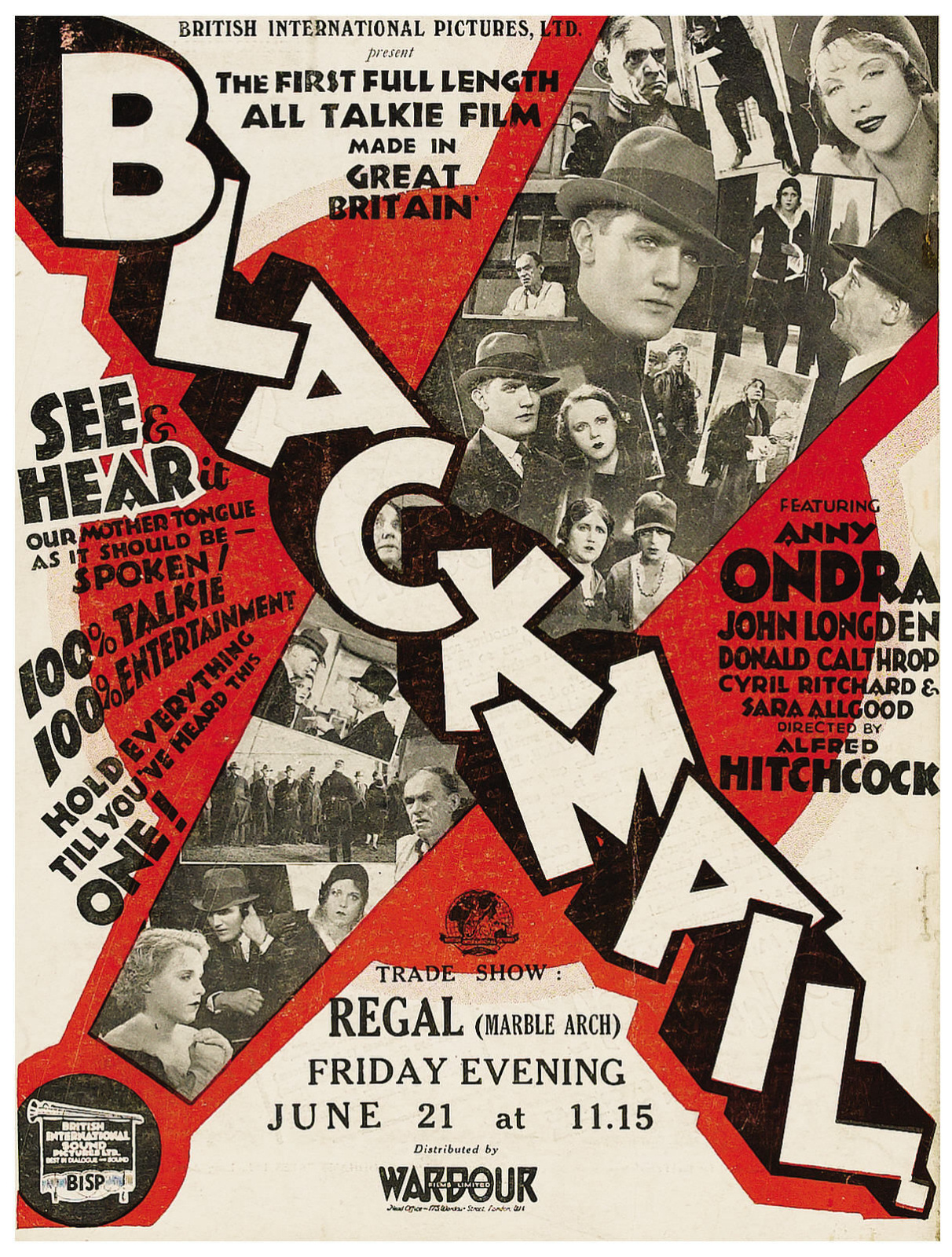
- Film
Out of the Vaults: ‘Blackmail’, 1929
* An occasional series on films restored with the support of the HFPA.
Alfred Hitchcock had made nine silent films before Blackmail, and this thriller started production in 1929 as a silent film as well. In the middle of shooting, the producer, John Maxwell of British International Pictures, seeing the success of the American The Jazz Singer the previous year, asked Hitchcock to shoot part of the film as a talkie. While he only envisioned the last reel to be reshot this way, Hitchcock reshot practically the whole film with synchronized sound. Reshoots were done after the silent version was completed. Cameras and (cameramen) were confined to glass-fronted soundproof boxes so that the rattle of the rolling cameras was muffled. There are some plot differences between the two versions, while several scenes look the same in both movies. The first reel in both is the same — the sound starts 6 ½ minutes into the film. The talkie was released two months earlier than the silent version, but that one made more money since most cinemas were not equipped for sound at the time. Even though it was ignored in subsequent years, some critics believe it is the superior one.
The film was based on Charles Bennett’s play of the same name which featured Tallulah Bankhead in the starring role on Broadway. Bennett and Hitchcock would collaborate on several more movies including The Man Who Knew Too Much (1934), The 39 Steps (1935), Secret Agent (1936), Sabotage (1936) and Foreign Correspondent (1940).
The poster for the film breathlessly proclaims:
THE FIRST FULL LENGTH ALL TALKIE FILM MADE IN GREAT BRITAIN
SEE AND HEAR IT
OUR MOTHER TONGUE AS IT SHOULD BE – SPOKEN!
100% TALKIE
100% ENTERTAINMENT
HOLD EVERYTHING TILL YOU’VE HEARD THIS ONE!

In the movie, Anny Ondra is Alice White, a shop-girl who is dating Scotland Yard detective Frank Webber, played by John Longden. The two quarrel in a teashop and she goes home with an artist, Mr. Crewe (Cyril Ritchard), who has invited her to see his studio. After some flirting, Crewe sexually assaults Alice and in self-defense, she stabs him. Distraught, she leaves the studio without her gloves. Webber is given the case, discovers Alice’s glove, and covers up the crime to protect his girlfriend. To complicate matters, she is then blackmailed by a man (Donald Calthrop) who says he saw her go up to the studio with the artist. He has her other glove.
Blackmail is considered the first British talkie with synchronized recorded sound as opposed to the “goat gland” sound films which were shot as silent films and had talkie sequences added after the shooting was completed. Czech star Ondra’s dialog was dubbed in the talkie as her accent was deemed unacceptable. Actress Joan Barry voiced her dialog off-camera into a microphone as Ondra mouthed her words during the scenes.
Over 90% of silent films made before 1929 have been lost, including some of Hitchcock’s early works. The Film Foundation, in partnership with the BFI National Archive, helped restore four silent films by Hitchcock, including both versions of Blackmail, as part of the BFI’s “Rescue the Hitchcock 9” program, completed in 2012. Principal restoration funding was provided by The Hollywood Foreign Press Association and The Film Foundation.
Film elements were scanned and restored digitally at 2K resolution and output back to 35mm film. BFI archivists completed a worldwide search for materials to examine as many existing copies of the films as possible. Some intertitles were reconstructed digitally, then returned to film and printed twice before being scanned and inserted into the digital master to give a filmic appearance to the new titles. The scans and restored data were preserved on data tape and 35mm restoration negatives were created for preservation and access.
The original camera negative was scanned at 4K resolution. Sections with the most severe damage were re-scanned with a wet-gate. Despite the significant curl of the film emulsion and delicate splices, a sharp scan with excellent tonal range was achieved, also allowing archivists to retain the film’s original intertitles.
Hitchcock’s talent for suspense and building tension is evident in this early work, and many scenes foreshadow classic moments in his later works. The struggle behind the bed curtains as Crewe tries to rape Alice flashes us forward to the shower scene in 1960’s Psycho. Alice’s groping for a knife out of her reach is reminiscent of Grace Kelly’s reaching for scissors in 1954’s Dial M for Murder. The scene of the denouement has a visual landmark, the British Museum, similar to the Statue of Liberty in Saboteur and Mount Rushmore in North by Northwest. Ondra was the first in a long line of blonde Hitchcock heroines in peril. And Hitchcock makes his signature cameo for the first time 10 minutes into the film as a passenger on the Underground bothered by a little boy. (He did make one in his The Lodger in 1926 – because of a shortage of extras – but he had his back to the camera.)
One of the best reviews Blackmail received was in the American newspaper The Bioscope, where the reviewer wrote: “We understand that Mr. Hitchcock began this production as a silent film and was then called upon to adapt his plans to meet the requirements of dialogue. He has certainly succeeded to admiration, for this is neither the mere adaptation of a stage play to the screen nor a silent film fitted with stage dialogue, and it may well be that Mr. Hitchcock has solved the problem of combining the two and helped towards assigning the true position of the sound film in the ranks of entertainment.”
The picture fell into the public domain as no one renewed the copyright. Therefore, a number of poor-quality versions of the film are available on VHS, DVD, and online, including on YouTube.
Blackmail was voted the best British film of 1929 in a poll of moviegoers. In a 1917 TimeOut poll, it was voted #59 in a list of best British films of all time by 150 actors, critics, and directors.

